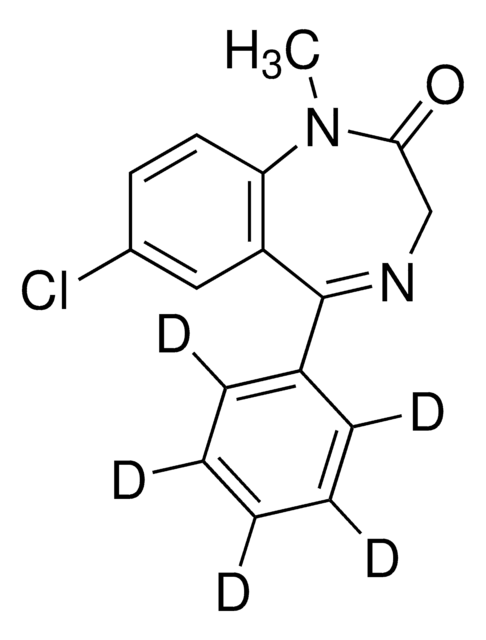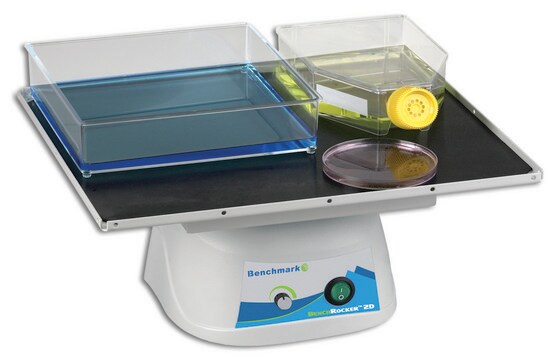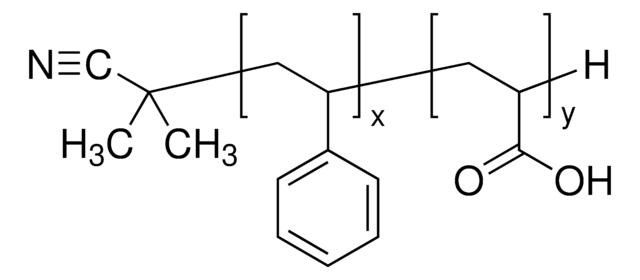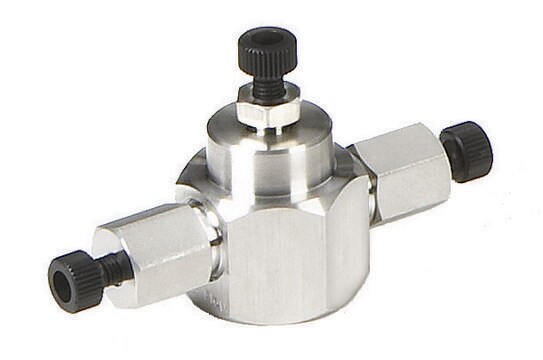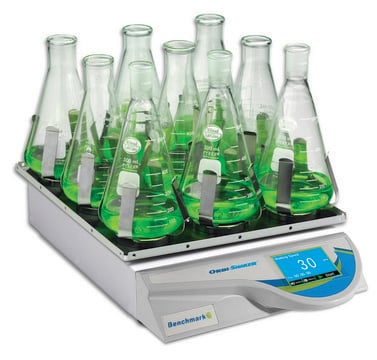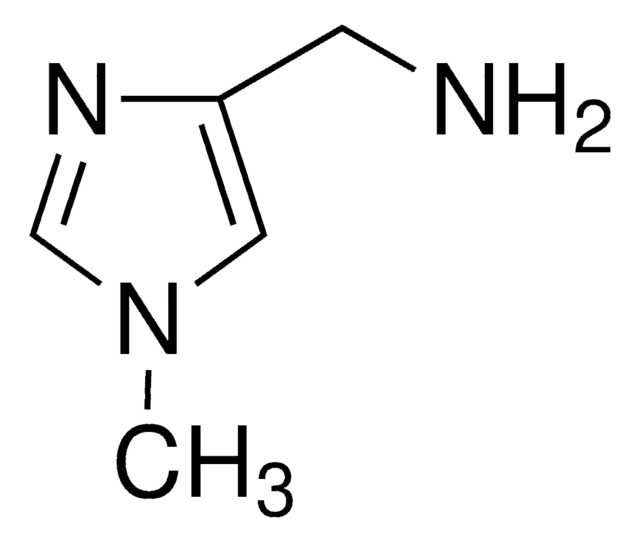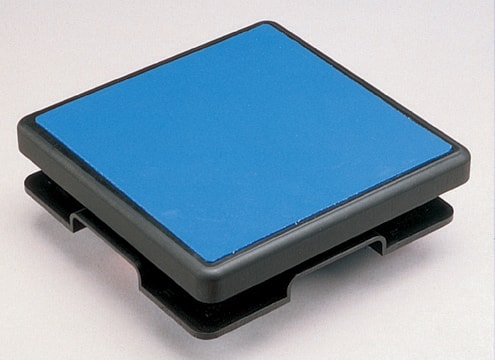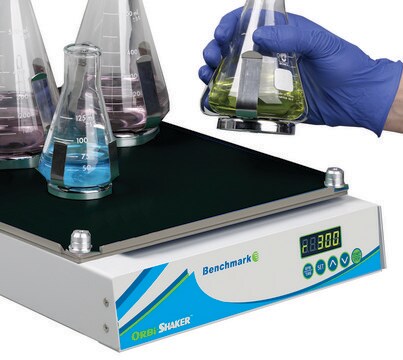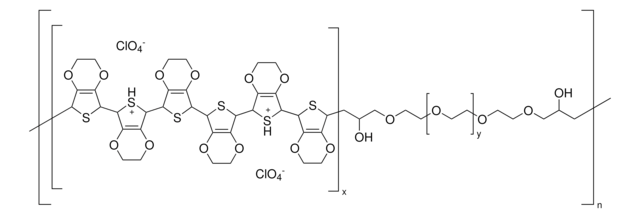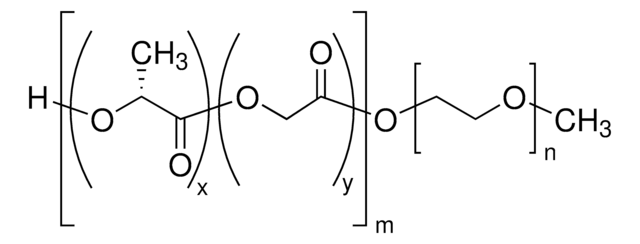735817
Polypyrrole-block-poly(caprolactone)
0.3-0.7 wt. % (dispersion in nitromethane), contains p-toluenesulfonate as dopant
Synonyme(s) :
Biotron PP-NM, PCL-block-PPy
About This Item
Produits recommandés
Forme
liquid (dispersion)
Niveau de qualité
Contient
p-toluenesulfonate as dopant
Composition
Biotron PP polymer, 0.3-0.7 wt. %
ethanol, 4-8 wt. %
nitromethane, 90-95 wt. %
Concentration
0.3-0.7 wt. % (dispersion in nitromethane)
Conductivité
10-40 S/cm (bulk)
Description générale
Average transmittance: 70-90%
Biodegradble conducting polymer for bomedical applications. PCL diol blocks have average molecular weight 2000 and PPy block have an average molecular weight of 4000 with a 25% doping level. Good biocompatibility with expected weight loss of 40% at 200 days in pH=7 buffer.
Application
Caractéristiques et avantages
Attention
Autres remarques
Informations légales
Mention d'avertissement
Danger
Mentions de danger
Conseils de prudence
Classification des risques
Acute Tox. 4 Inhalation - Acute Tox. 4 Oral - Carc. 2 - Flam. Liq. 2 - Repr. 2
Code de la classe de stockage
3 - Flammable liquids
Classe de danger pour l'eau (WGK)
WGK 2
Point d'éclair (°F)
66.9 °F
Point d'éclair (°C)
19.4 °C
Faites votre choix parmi les versions les plus récentes :
Déjà en possession de ce produit ?
Retrouvez la documentation relative aux produits que vous avez récemment achetés dans la Bibliothèque de documents.
Les clients ont également consulté
Biomedical Applications
Articles
The application of conducting polymers at the interface with biology is an exciting new trend in organic electronics research.
Optoelectronic Devices Based on Diketopyrrolopyrrole (DPP)-containing Conjugated Small Molecules
Dr. Tan and researcher introduce recent trends in Self-healing Soft Electronic Materials and Devices. The emergence of smart, functional SHPs will be highly beneficial to the advancement of the next-generation self-healing soft electronic devices. Autonomously self-healing devices could help to minimize the need for repair or replacement of electronics and machines, potentially reducing the cost of materials and reducing electronic waste.
While dye sensitization as the basis for color photography has been accepted for a very long time,1 attempts to use this principle for the conversion of solar light to electricity generally had resulted only in very low photocurrents, below 100 nA/cm2.2
Notre équipe de scientifiques dispose d'une expérience dans tous les secteurs de la recherche, notamment en sciences de la vie, science des matériaux, synthèse chimique, chromatographie, analyse et dans de nombreux autres domaines..
Contacter notre Service technique